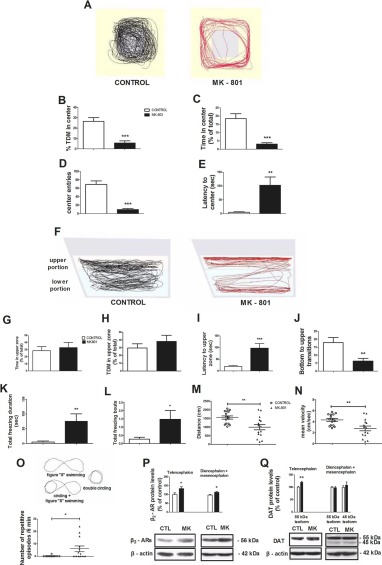Fig. 3 Fig. 3. MK–801-treated zebrafish display anxiety–like behavior, abnormal pattern of repetitive movements and altered catecholaminergic neurotransmission. (A–N) Anxiety-like behavior estimated at OFT and NTT. (A) Representative swimming behavior tracings of control (left) and MK-801-treated (right) zebrafish in OFT, (B) % TDM in the center zone, (C) Time spent in center zone, (D) Number of entries in center zone, (E) Latency to enter in center zone (F) Representative swimming behavior tracings of control (left) and MK–801-treated (right) zebrafish in NTT, (G) Time spent in upper zone, (H) % TDM in upper zone, (I) Latency to enter upper zone, (J) Number of bottom to upper transitions, (K) Freezing duration, (L) Freezing frequency, (M) Total distance travelled, (N) Average velocity (0) A representative example of movements considered repetitive is illustrated above. Increased frequency of stereotyped movements in MK–801 zebrafish (P–Q) Altered β2-adrenoceptors (P) and DAT (Q) protein expression levels determined by western blotting in telencephalon and in the diencephalic/mesencephalic complex of MK-801-treated zebrafish. Data are expressed as mean ± SEM, n = 15 or n = 8–10 per group for behavioral tests or western blot analysis, respectively. *p ≤ 0.05, **p ≤ 0.01, ***p ≤ 0.001, compared to controls.
Image
Figure Caption
Acknowledgments
This image is the copyrighted work of the attributed author or publisher, and
ZFIN has permission only to display this image to its users.
Additional permissions should be obtained from the applicable author or publisher of the image.
Full text @ Prog. Neuropsychopharmacol. Biol. Psychiatry

